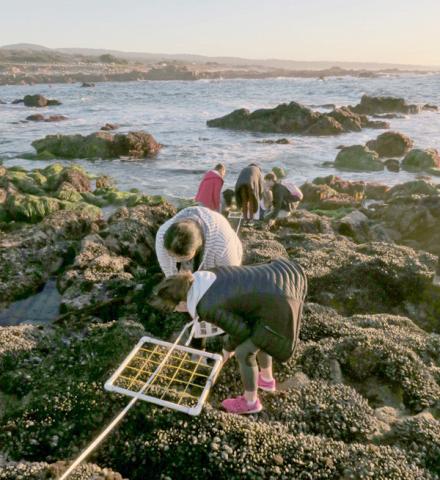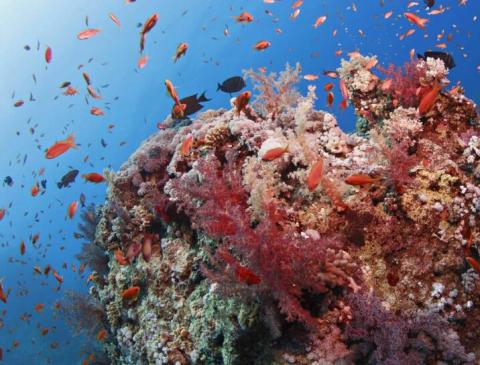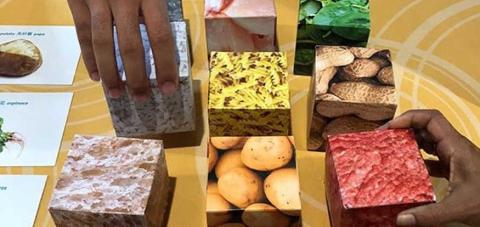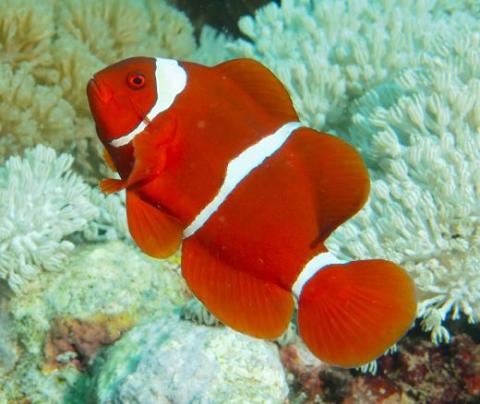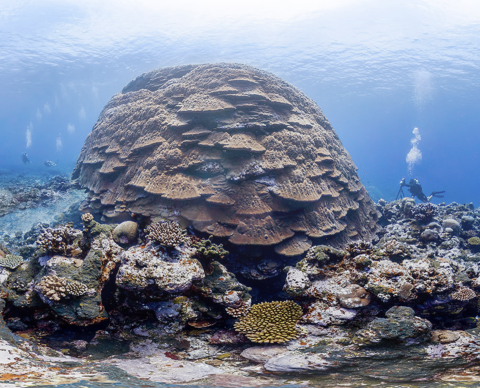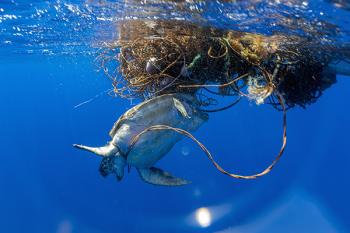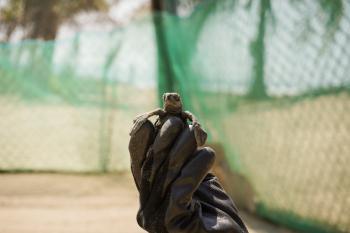
The chemistry of the ocean is changing due to climate change. According to the IPCC’s 2019 report, the ocean is continuing to acidify in response to the ongoing ocean absorption of carbon from the atmosphere. Since the industrial revolution, the pH of surface ocean waters has fallen by 0.1 pH units. This might not sound like much, but the pH scale is logarithmic, so this change represents approximately a 30 percent increase in acidity.
Over 95% of the near-surface open ocean has already been affected. These changes in pH have lowered carbonate ion concentrations, most notably in the upwelling and high-latitude regions of the ocean.
This changing ocean chemistry will reverberate through every coastal and marine ecosystem. Read our blog about how and why the waters of the west coast are acidifying more quickly than the global ocean. Scientists working in the Monterey Bay are conducting field studies to see the impact of ocean acidification locally.
Sometimes called climate change’s “evil twin,” ocean acidification poses a critical threat to shell -building organisms: there are fewer carbonate ions available to use for shells and it makes the water more corrosive for marine organisms that build their shells and structures out of carbonates, such as plankton, shellfish and corals.
Plankton
Plankton are very small plants and animals that are at the base of the marine food web. Studies have found that some species do better in a more acid ocean and other do worse. Some plankton have calcium carbonate structures built from carbonate ions. Changes to the survival, growth and physiology of plankton can have impacts throughout the food web.
Pteropods, free-swimming sea snails called sea butterflies, are often the primary zooplankton at the base the food web in arctic and subarctic waters. These animals may be unable to maintain shells in waters with less available calcium carbonate. Scientists are already seeing pteropods with damaged shells.
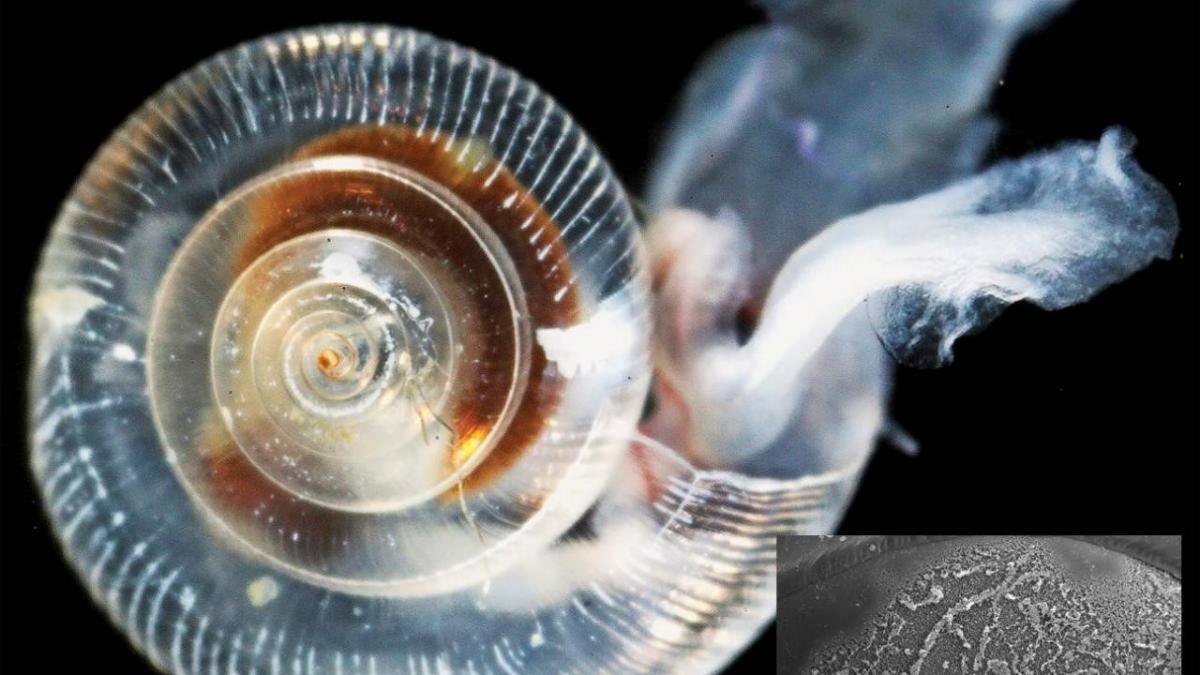
Closer to home, a study off the coast of Washington concluded: “It appears that pteropods make thinner shells where upwelling brings water that is colder and lower in pH to the surface.”
Shelled animals
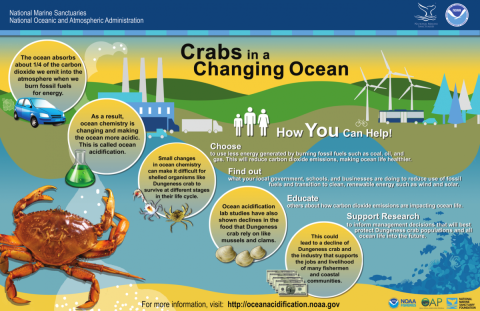
Marine arthropods make their shells from calcium carbonate. Crabs, for example, are vulnerable to the changes in ocean chemistry. This communication toolkit contains information and images about how ocean acidification is impacting Dungeness crab.
The ocean’s increasing acidification may even change the way we eat by affecting shellfish in our diet. Oysters, mussels, abalone, and other shellfish need calcium carbonate to build their shells. With increasing acidity, the shells are thinner, growth is slower and death rates rise. Oyster farmers in the Pacific Northwest are already seeing problems with shell growth in young oysters.
The good news is that scientists think that natural genetic variations may help some animals adapt to a more acidic ocean. In a lab experiment scientists from UC Davis found that wild red abalone from an upwelling region along the northern California coast were tolerant of ongoing ocean acidification, while about half of captive-raised abalone sourced from a Southern California aquaculture facility died under the same conditions. The adaptations of those wild abalone may help wild abalone populations survive.
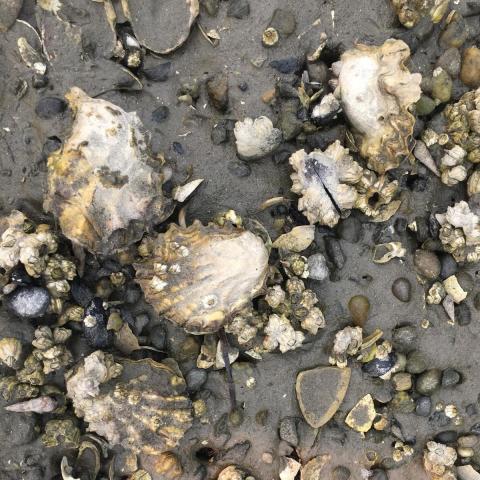
Scientists at the Monterey Bay Aquarium Research Institute looked at how the changes in individual animals due to acidification might impact entire marine communities. They found that for species that were in predator-prey or competitor relationships, the indirect effects of climate change may be powerful in shaping the food web and the future of marine communities.
Coral Reefs
Acidification is affecting corals' ability to build their skeletons from calcium carbonate. Scientists have long suspected this, but it has been challenging to isolate the effects of acidification from those of simultaneously warming ocean temperatures, which also influence coral growth. See coral reef section.
As the ocean absorbs more carbon dioxide, carbonate ions become scarcer; so, corals have to expend more energy to collect them, reducing their ability to build their skeletons. In addition, “ocean acidification targets the density of the skeleton, silently whittling away the coral's strength, much like osteoporosis weakens bones in humans.” For example, corals are showing a significant reduction in the density of their skeletons along much of the Great Barrier Reef.
Stanford University scientists have produced a 360-degree virtual underwater ecosystem “to provide an up-close look at how coral reefs might appear by the end of the century if emissions aren’t curbed.”
Not only does acidification impact animals’ ability to make shells it also affects sensory systems. For example, in young damselfish visual information would be impaired by increased ocean acidification and as would the sense of smell and detection of predators by young clownfish.
Sound in the ocean
Scientists have found that ocean acidification is affecting the way sound is transmitted. More acidic waters absorb less low-frequency sound, meaning that these sound waves could travel further – or, to submerged ears, sound louder, which impacts the marine mammals, like dolphins and whales, that depend on sound for communication and finding food. Climate change will alter the ocean’s soundscape. It will silence some species and likely move others into new habits and habitats, changing when and where they sing, whistle, or bellow.”
Snapping shrimp, for example, snap less often and at lower volumes when the water becomes more acidic. The lower pH doesn’t seem to damage the shrimp physically; rather, it simply changes their behavior, perhaps by acting directly on their nervous systems.
The future
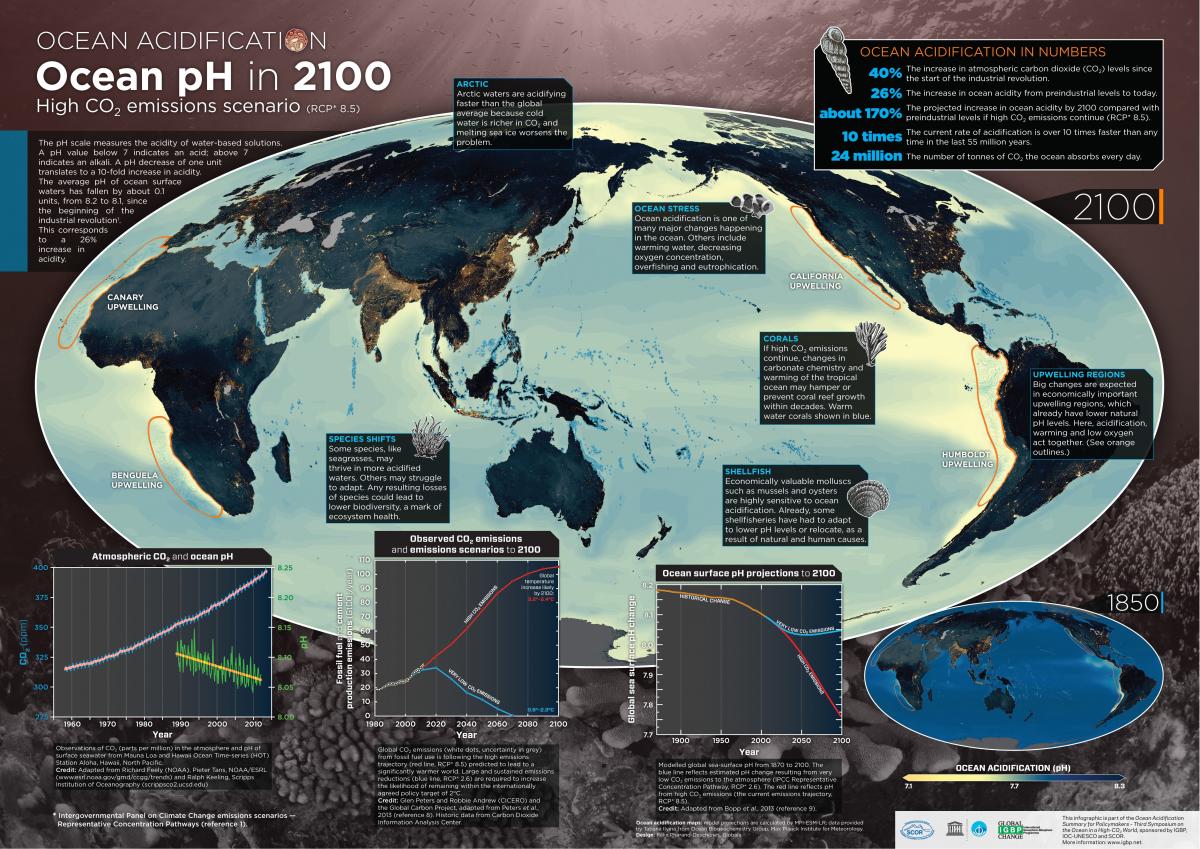
Since the industrial revolution, ocean acidity has increased about 30% and it is expected to increase by 100-150% by 2100 if CO2 emissions continue in a business-as-usual scenario. This rate of change surpasses all ocean acidification in the last 50 million years.
More information
- The Smithsonian has a thorough, informative portal about ocean acidification.
- MBARI has compiled resources about acidification
- Test your knowledge of ocean acidification in this interactive
